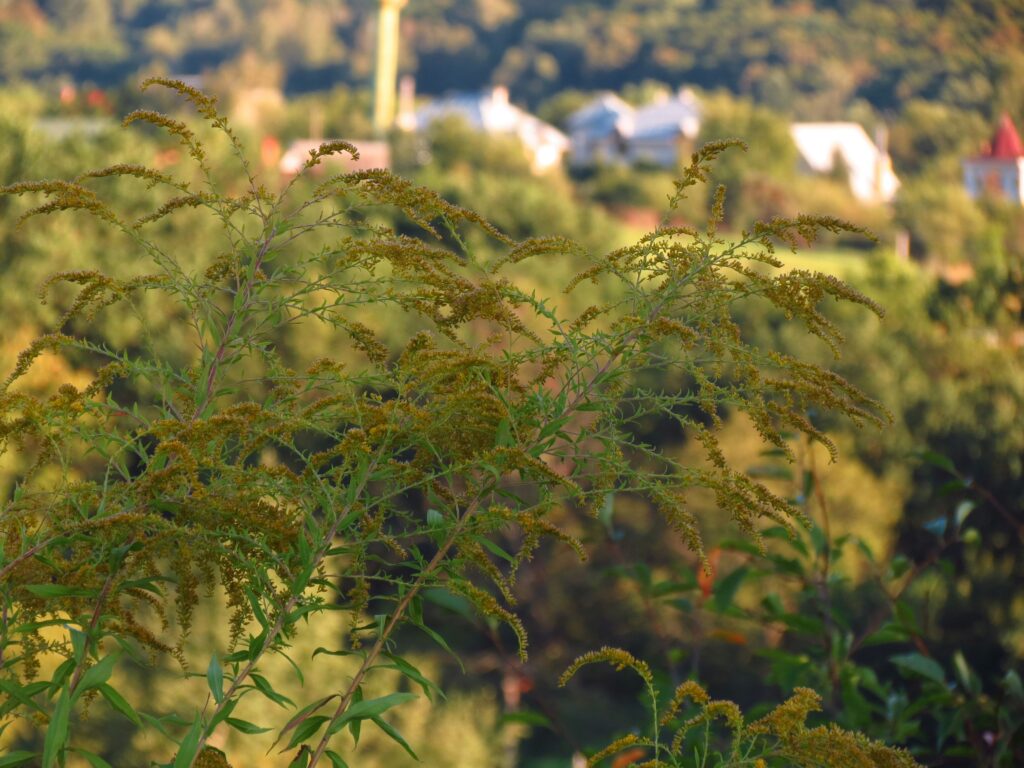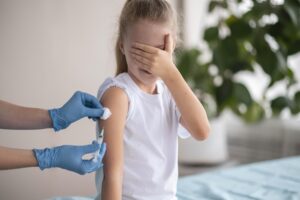According to the Pollen Information Service, there will be a very high pollen load from ragweed from the end of August, which can trigger severe allergic reactions. 🌿🍃 🤧 It is important for the child's well-being to recognise and treat an allergy as early as possible. After testing at an allergy centre, we will be happy to advise and inform you about the right treatment for your child.
Testing does NOT take place in our surgery! If you have any questions or would like to make an appointment, please call +43 1 544 44 45
Profile
Appearance
Ambrosia, better known as ragweed, is an annual plant that grows up to 1.80 metres tall and has a pinnate Browse.
The ragweed is easily recognisable by its strongly branched, hairy stems and the deeply incised, often triangular leaves to recognise.
Their seeds have thorns and can grow for years. germinate in the soil.
Origin
Ragweed originally comes from North America.
Over the course of time, it was unintentionally replaced by the import of Seeds and other plant materials to Europe.
Spread
Ragweed is spreading in Austria, especially in the Eastdue to climate change. It colonises diverse (private gardens, road or railway verges, construction sites and agricultural land) Locations and represents a growing problem.
The extreme hot temperatures of the past weeks were ideal for the Flower growth (=pollen) of the plant. There will be a heavy load from the end of August
Ragweed allergy
The plant is considered highly allergenic. This means that already few pollen sufficient to Reactions to evoke.
Hay fever: Itchy eyes, runny nose, sneezing and breathing difficulties are typical symptoms of a ragweed allergy.
Asthma: Ragweed pollen can trigger severe asthma attacks in asthmatics.
Skin irritation: Contact with the plant can cause skin irritation in some people.
What can be done against ragweed?
Early detection and removal
Ragweed plants should be recognised and removed as early as possible, before they flower and spread pollen.
ImportantWear gloves when removing to avoid skin contact with the plants.
Waste disposal
Removed plants should be placed in well-sealed plastic bags in the residual waste disposed of in order to prevent further spread
Garden maintenance
- Regularly check the garden for ragweed plants
- Weed regularly
- Greening derelict areas
Bird food
Only use ambrosia-free bird food.
AGES. (12. März 2024). Ambrosia. Abgerufen am 22.08.2024 verfügbar unter https://www.ages.at/pflanze/pflanzengesundheit/schaderreger-von-a-bis-z/ambrosia#c4534
Medizinische Universität Wien. (5. August 2022). Ragweed-Allergie: Herkunftsort und Umwelt beeinflussen Aggressivität der Pollen. Abgerufen am 22.08.2024 verfügbar unter: https://www.meduniwien.ac.at/web/ueber-uns/news/2022/news-im-august-2022/ragweed-allergie-herkunftsort-und-umwelt-beeinflussen-aggressivitaet-der-pollen/









